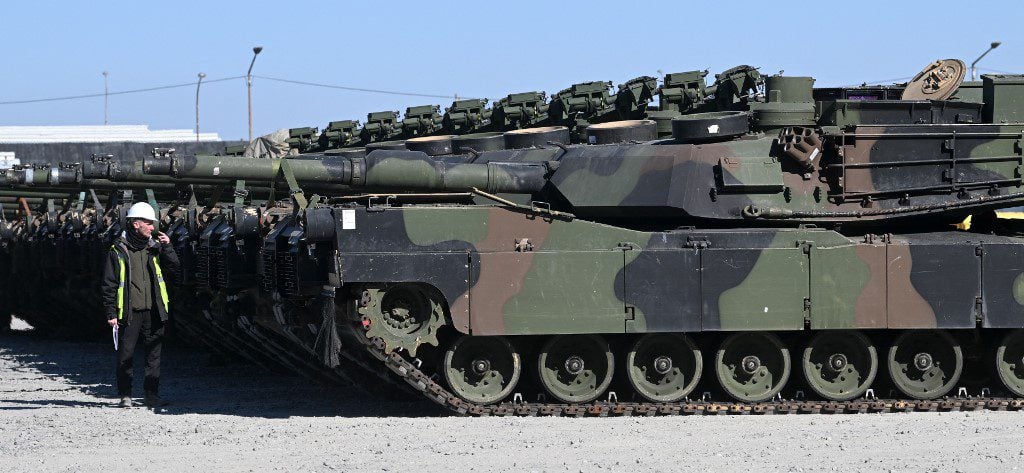
Camille-Jean Helou
The Stockholm International Peace Research Institute (SIPRI) released its yearly review of the global arms trade, and the United States was once again the leading weapons exporter. Forbes reports that between 2017 and 2021, the United States delivered 39 percent of significant arms deliveries worldwide, more than twice what Russia did and nearly ten times what China did to its weapons clients. Furthermore, the United States had significantly more consumers — 103 countries, or more than half of the UN member states.
While the United States’ arms exports dwarf everyone else’s, the bulk of its shipments, 47%, are to the Middle East, with Saudi Arabia being the largest consumer by far.
But just what is the military industrial complex and how did it start?
In his 1935 book: “War is a Racket,” highly-decorated marine-corps general Smedley Butler warns the American people of flagrant corruption at the heart of the US war-machine. He decries the grave undue influence of business interests over government decisions, saying: “War […] is conducted for the benefit of the very few, at the expense of the very many […] the profits are reckoned in dollars and the losses in lives.”
In 1961, U.S. President Dwight Eisenhower warns the nation via televised address “against the acquisition of unwarranted influence […] by the military industrial complex.”
Many decades later, very little has changed. Tragedies are still perpetrated over petty economic concerns, and prominent anti-war voices remain few and far between. Powerful nations still wage endless wars of attrition in the poorest places on earth, to pursue ambiguous and unachievable fiscal goals.
Craig Whitlock’s “The Afghanistan Papers,” reveals how American generals and high-ranking officials believed the war in Afghanistan to be unwinnable, but misled the public through false testimony to keep the war going because every day of hostilities meant millions in profit for weapons manufacturers.
Industry, politics, and the army collude in broad daylight to extract more profit from war than could ever be had in times of peace.
Industry
Comprised of massive multinational corporations that exceed most countries in wealth and influence, the military industrial complex is at the root of most conflicts around the world, because it benefits from all of them. Boeing, Lockheed Martin, Raytheon, and many others, feed the flames of conflict with consumable armaments, from a safe distance, protected within the borders of powerful Western nations, such as the U.S., Canada, Great-Britain, and France, to name a few.
A business always seeks to increase its profit margin by every available, legal means. And since material consumed by military actions is produced by private companies and sold to governments for profit, producers of military hardware lobby lawmakers to facilitate the path to war in exchange for what is essentially a bribe, but delivered in a roundabout way so as to remain technically allowed. After all, the crucial distinction is that bribery is criminal, while lobbying is not.
The consequences of this coordinated lobbying effort can be observed in endless military-spending increases around the world.
Professor Jonathan Turley mentions in a 2014 Al-Jazeera op-ed that “trillions of dollars have flowed to military and homeland security companies.” For example, “In the first 10 days of the Libyan war alone, the administration spent roughly $550m. That figure includes about $340 million dollars for munitions – mostly cruise missiles that must be replaced.”
Politics
Governments serve big business. This much is undeniable. A 2014 Princeton University study confirms that public opinion has “near-zero” impact on U.S. law. Most of the time, legislation reflects the interest of corporations.
If you take a good look at the leaders of any major industrial power, they start to look like salesmen for the weapons industry. You can’t go a month without the U.S. president pushing the latest drone on the UAE, or the French president withdrawing ambassadors to help a private corporation sell more submarines.
So as long as money can be made by dropping bombs, much of the developing world, the MENA region especially, will never know peace.
Despite claims of democratization and peacekeeping, U.S. military engagements always turn out to be unnecessary and self-serving. Even U.S. soldiers who fought in Iraq disapprove of the invasion, Pew Research Center reveals. Military contractors, on the other hand, who made 138 billion dollars from the war, probably think it was a great idea.
Armed Forces
The armed forces are the third entity in this symbiotic relationship. Politicians and oligarchs outrank them in social hierarchy and chain-of-command, but their active collaboration is essential to the continued viability of war as a for-profit business-model.
High-ranking officers and intelligence officials are relied upon to report the state of the armed forces. They can tailor their assessments so as to influence the decisions made by the state. Unsubstantiated claims and manipulated data were instrumental in sustaining U.S. military operations in Iraq, Afghanistan, and Syria.
This is why generals are often courted by representatives of the weapons industry, tempted with gifts, favors, and promises of future employment. Regulations are often rolled back, just to make lobbying military and intelligence personnel easier.
Which isn’t to say that old-school illegal bribery never happens. It certainly has its place in the corruption ecosystem.
When it comes to war profiteering, the world can’t afford to go along with business as usual. In addition to killing millions, the enterprise of war-making is also actively reducing the quality of life of future generations, by way of pollution and climate-change.
After all, the environmental impact of war is staggering. The U.S. military alone consumes more liquid fuels and emits more CO2 than most countries combined, a 2019 report released by Durham and Lancaster University finds.


